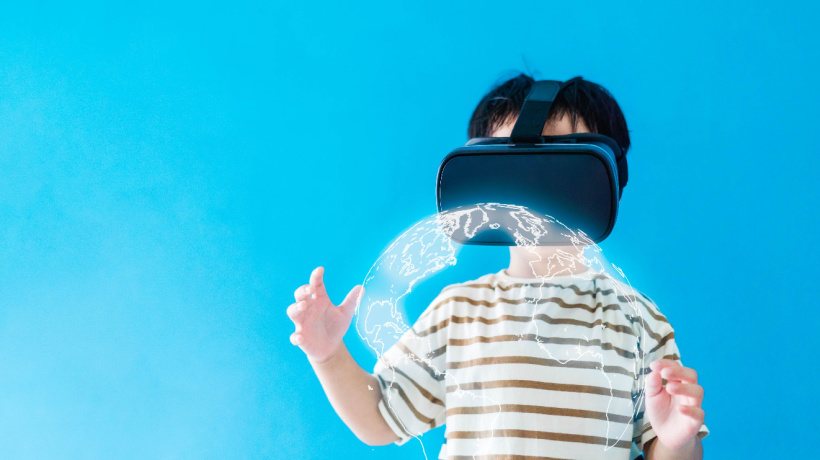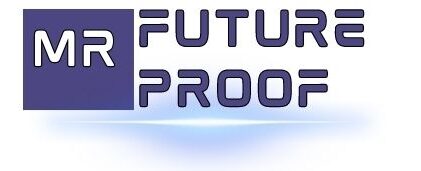Virtual reality education is revolutionizing traditional learning methods, providing an immersive, interactive experience for students. With vr technology, education becomes more engaging, impactful, and efficient.
Education is undergoing a transformational shift with the emergence of virtual reality. Vr technology creates a unique learning environment that stimulates all of the senses and encourages immersive learning experiences. Students can interact with 3d objects, visit historic locations, and participate in simulations that were previously impossible in a classroom setting.
Through virtual classrooms, students can access courses from anywhere in the world, breaking geographic barriers. Virtual reality education is paving the way for personalized learning, adaptive teaching methods, and offers a cost-effective alternative to traditional in-person education. In this article, we will explore how virtual reality is transforming education and how it is shaping the future of the learning experience.

Credit: elearningindustry.com
Virtual Reality – Bringing Learning To Life
Virtual reality (vr) has rapidly become one of the most popular teaching aids in the education sector. Thanks to the rapid advancements in technology, vr has become more affordable and accessible, creating a significant shift in the way we learn.
How Vr Has Revolutionized The Education Sector
Vr has revolutionized the education sector by providing a new, more innovative way of learning. Below are some ways that vr has transformed education:
- Immersive experience: Vr technology provides an immersive experience that makes learning more engaging and interactive. It brings life to abstract concepts and stimulates students’ curiosity.
- Enhanced retention of information: Vr provides students with a more realistic perspective of the subject. This enhances their retention of information and increases their ability to remember what they learn.
- Practical training: Vr has gained popularity in vocational training as it allows students to get hands-on experience in a safe virtual environment.
Importance Of Vr In Education
The growing importance of incorporating vr into classrooms cannot be overemphasized. Here are some reasons why vr is vital in education:
- Equal opportunities: Vr levels the playing field by providing equal opportunities to students regardless of their financial background or location.
- Convenience: With vr, students can learn at their own pace and convenience, which is especially beneficial for adult learners who cannot attend traditional classes.
- Cost-effective: Vr is a cost-effective way of learning, especially for courses that require expensive equipment or are impractical to teach within a limited budget.
Understanding Applications Of Vr In Education
The applications of vr in education are limitless. Here are some examples of how vr can be used in education:
- Science: Vr technology allows students to explore scientific concepts that would otherwise be impossible, such as exploring the inside of the body or visiting distant planets.
- History: Vr allows students to travel back in time and experience historical events as if they were there.
- Art: Vr can be used to visit famous art galleries and museums globally, providing students with an immersive experience of art.
Vr technology has transformed the education sector by providing an innovative and engaging way of learning. Incorporating vr into education allows students to acquire knowledge beyond what traditional methods can provide. As vr continues to become more accessible, we can expect to see an increase in its application, which can only be positive for the education system.
Enhancing Learning Outcomes
Virtual Reality Education: Revolutionizing The Way We Learn
With the advent of technology, education is no longer limited to traditional classroom settings. Virtual reality (vr) technology has emerged as a game-changer in transforming the way we learn. It provides a unique and interactive learning experience that enhances learning outcomes by creating a 3d environment.
In this blog post, we will explore how vr is revolutionizing education, with a particular focus on enhancing learning outcomes.
Higher Retention Rates With Vr-Assisted Learning
One of the significant benefits of vr-assisted learning is higher retention rates. Research has shown that people remember 10% of what they read, 20% of what they hear, and 90% of what they do or simulate. Vr provides an immersive environment that allows students to engage in practical and hands-on learning experiences.
This type of learning is effective in enhancing knowledge retention as it allows for experiential learning. The use of vr simulations in various fields such as medicine, architecture and aerospace engineering is becoming increasingly popular among students and educators.
Interactive And Immersive Learning Experience
Vr technology provides students with an opportunity to interact with the learning content in an immersive manner. It enables students to learn by doing, rather than passively consuming information. Vr simulations create a realistic environment that mimics real-life scenarios, allowing students to experience different situations and learn from them.
This type of learning fosters critical thinking, problem-solving, and decision-making skills that cannot be easily replicated in a traditional classroom setting.
Personalized Learning Experiences
Another benefit of vr assisted learning is the ability to provide personalized learning experiences. Each student learns differently, and vr technology enables educators to tailor the learning experience to individual student needs. With the use of vr, educators can create custom-made simulations that cater to different learning styles, needs, and goals.
This type of personalized learning experience ensures that every student can learn at their own pace, which enhances knowledge retention and academic success.
Facilitating Learning For Differently-Abled Students
Vr technology is inclusive, providing an excellent opportunity for students with disabilities to learn. It has been shown to have a positive impact on students with autism spectrum disorder, attention deficit hyperactivity disorder, and dyslexia. The immersive environment created by vr simulations allows students to learn at their own pace, without fear of embarrassment or discrimination.
It provides the ability to offer an interactive and inclusive learning experience.
Vr technology has led to a paradigm shift in the way we learn. It offers a unique, immersive and interactive learning experience that enhances knowledge retention, fosters critical thinking, and decision-making skills. Vr-assisted learning provides personalized learning experiences while ensuring that differently-abled students are not left behind.
As such, it has become an essential tool in education globally.
Cost-Effective Learning Solutions
Implementation Of Vr In Remote And Economically-Disadvantaged Regions
Virtual reality has the power to bring the classroom to remote and economically-disadvantaged regions. Here are some ways vr can revolutionize the way we learn:
- With vr, students can explore places they may never have had the opportunity to visit in person, making it an excellent tool for geography and environmental science classes.
- Students in remote areas can have access to the same quality education as those in urban areas, and interactive vr lessons can help bridge the achievement gap.
- Vr makes it possible for students to learn practical skills in a safe and controlled environment, such as handling equipment in a factory, without needing access to real machinery.
Availability Of Vr Technology And Accessibility For All Students
In the past, vr technology was expensive and inaccessible for most students. However, advancements in technology have made vr more affordable and easier to access than ever before. Here’s how:
- Mobile vr headsets are now widely available and relatively inexpensive, making it possible for schools to purchase enough sets for an entire class.
- Vr technology is becoming more user-friendly, with a focus on making it accessible to users with little to no technical experience.
- Many educational content creators are now developing vr-based curricula, including apps, games, and 3d models, making it easier for teachers to tap into this technology-rich resource.
Reduction In Costs Associated With Traditional Educational Systems
Traditional educational systems can be costly, with expenses involved in textbooks, lab equipment, and field trips, among others. Here’s how vr can help reduce these costs:
- Vr can replace expensive field trips, as students can explore virtual museums, historical sites, and other locations from the comfort of their classroom.
- Instead of purchasing expensive equipment or materials for hands-on learning, vr simulations can provide a cost-effective alternative.
- Vr can provide more in-depth understandings of complex subjects, reducing the number of resources required to teach and learn effectively.
With the implementation of vr, students can have access to a cost-effective and interactive educational experience, regardless of their location, background, or economic status. As vr technology continues to evolve, we can expect even more dynamic and engaging learning experiences in the near future.
Overcoming Barriers To Implementation
Virtual reality technology has revolutionized multiple industries, including education. Using vr in education can help students better comprehend complex concepts and enhance their overall learning experience. However, implementing vr in traditional educational systems comes with its own challenges. Let’s discuss some of the barriers to implementation and how to overcome them using the following h3 headings:
Integration And Implementation Of Vr In Traditional Educational Systems
- The integration of vr in traditional educational systems can be challenging due to limited funding and resources in many schools and universities.
- Teachers and educators may lack the necessary knowledge and skills to use vr technology effectively in the classroom.
- To overcome these challenges, schools and universities should invest in the necessary infrastructure and training to integrate vr into existing teaching methods.
- Collaborating with experienced vr developers and educational technology companies can also help facilitate the integration of vr technology in traditional educational systems.
Developing Vr Content And Specialized Training For Teachers
- Developing high-quality vr content that aligns with educational standards and guidelines can be an expensive and time-consuming process.
- Teachers will require specialized training to effectively use vr technology and incorporate it into their lesson plans.
- To mitigate these challenges, educational institutions can collaborate with vr developers and tech companies to create cost-effective vr content.
- Additionally, providing teachers with access to professional development opportunities can help them gain necessary skills and confidence in using vr technology in their classroom.
Overcoming Ethical And Moral Considerations
- The use of vr in education raises ethical and moral concerns around student safety and privacy.
- Educational institutions need to develop clear policies around data privacy and training sessions for teachers and students to reinforce ethical conduct while using vr technology.
- Creating guidelines for the responsible use of vr in educational settings can also help educators ensure that students are not exposed to inappropriate content or online predators.
- Overcoming these ethical and moral considerations will play a vital role in providing a safe and effective learning environment for students.
The use of vr technology in education presents immense opportunities to enhance the learning experience for students. However, it is crucial to understand and address the challenges that accompany its implementation. With extensive research and careful planning, educational institutions can successfully overcome these barriers and integrate vr technology into their traditional educational systems.
Future Of Vr In Education
Virtual Reality Education: Revolutionizing The Way We Learn
The education sector has always been the last to implement new technologies, but the emergence of virtual reality (vr) has bridged the gap between traditional teaching methods and modern-day technology. As a result, it has become a new and improved way of learning which provides substantial benefits to students.
The potential for vr to change the way we learn is enormous, and it is essential to consider its future in the education sector.
Possibilities For Innovative And Advanced Vr Learning Experiences
Virtual reality technology can present outstanding opportunities that traditional teaching methods cannot offer. Here are some of the possibilities for innovative and advanced vr learning experiences:
- Immersive learning environments: Vr can create immersive 3d simulations to enable students to understand complex concepts. By being able to visualise, explore, and manipulate data in real-time, students are more likely to comprehend the material better. For instance, medical students can virtually dissect organs, bones, and muscles safely and without any risk.
- Virtual field trips: Vr technology can offer virtual field trips, making it possible for students to experience locations that are impossible or challenging to visit physically. The possibilities for virtual trips are infinite – you can visit the great barrier reef, explore space or take a trip to machu picchu.
- Interactive lessons: Vr technology offers students a chance to interact with content actively. With interactive lessons, students can acquire information in a manner that is more engaging and memorable than just memorising facts. Vr interactive lessons can provide an easier and friendly learning experience for students.
Investment Opportunities In Vr Education
The vr industry in education is still new and growing, and there are many investment opportunities available. There are several ways to invest in the market today, including:
- Vr equipment and software: Investing in vr equipment and software providers is one way of investing in the industry. By doing so, you ensure you profit from the growing market and maintain a long-term investment opportunity.
- Vr education and training solutions: The demand for education and training solutions using vr technology is increasing. Therefore, investing in companies that provide vr education and training solutions is a smart decision.
Collaborations And Partnerships For Vr Initiatives
There is enormous potential for collaborations and partnerships in the vr education sector. The tech industry can work together with educational institutions, organisations and governments to make vr accessible and to develop new content. Here are some of the potential opportunities for collaborations and partnerships in this field:
- Edtech start-ups: Start-ups are some of the innovative forces in the edtech industry. They can collaborate with academic institutions to enhance and develop new content.
- Corporate partnerships: Corporations can partner with learning institutions to offer practical learning opportunities. By collaborating with companies, learning institutions can stay up-to-date with the latest technologies and prepare students for the job market.
Virtual reality is a game-changer in the education sector. It can provide innovative, advanced, and interactive learning experiences to students. By investing in vr and collaborating on vr initiatives, the education sector can take full advantage of vr technology and revolutionize the way we learn.
Frequently Asked Questions Of Virtual Reality Education: Revolutionizing The Way We Learn
What Is Virtual Reality Education?
Virtual reality education is a digital learning environment using vr technology for immersive educational experiences.
What Are The Advantages Of Virtual Reality Education?
Virtual reality education allows for interactive, experiential learning that is engaging, memorable, and offers immediate feedback.
What Are Some Examples Of Virtual Reality Education?
Virtual reality education examples include vr simulations for science, history, engineering, language learning, and medical training.
Conclusion
It’s undeniable that virtual reality technology has opened doors for a new era of learning experience, transforming the way we acquire knowledge. From science experiments to historical reenactments, vr technology provides a new level of immersion that traditional learning methods cannot offer.
In addition, it caters to different learning types, making education more inclusive and effective for all. As we continue to witness a shift towards digitization, the adoption of vr technology is crucial for educational institutions to remain relevant and meet the changing needs of students.
However, challenges such as affordability and access to technology still exist, hindering its widespread integration. Nonetheless, the benefits of vr education are undeniable and as technology advances and prices become more affordable, we can expect vr technology to revolutionize education and make learning a more engaging and interactive process for all.

